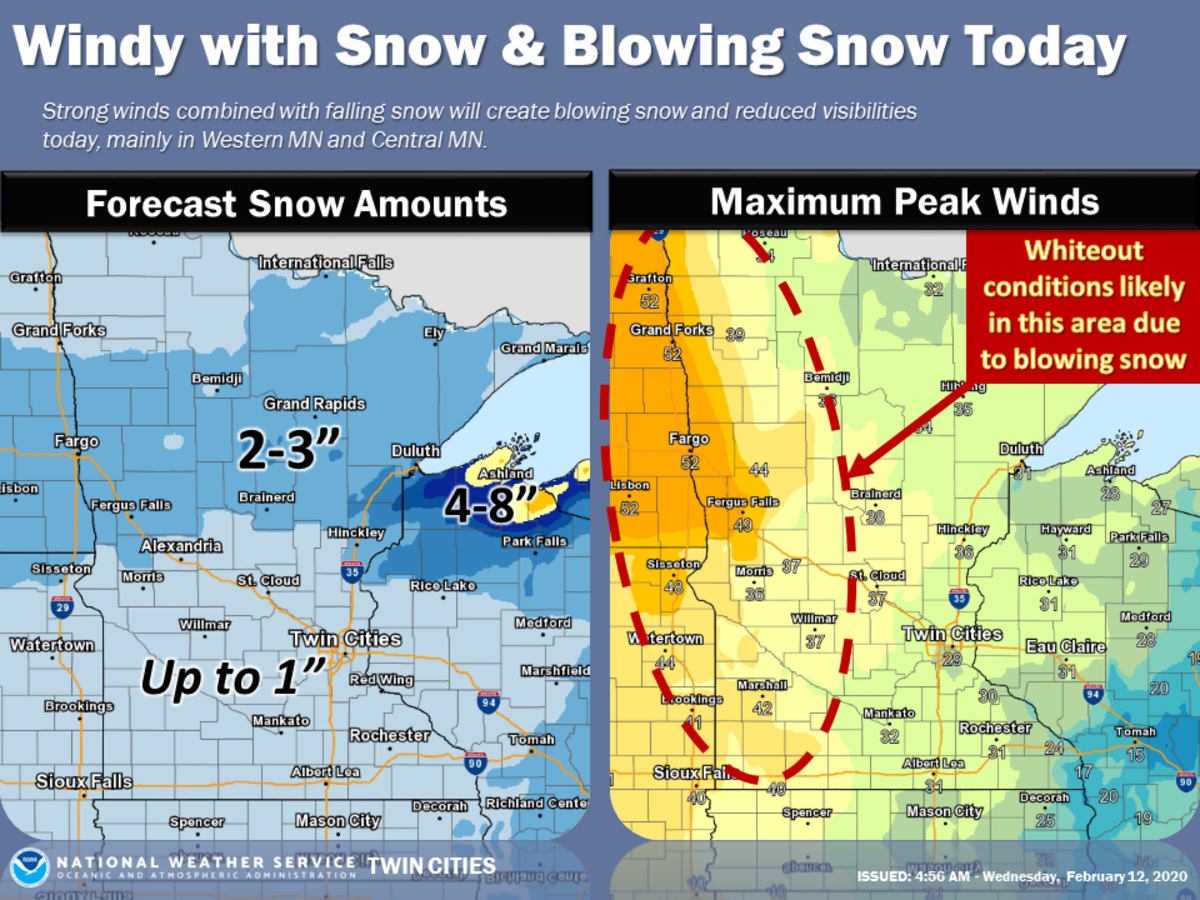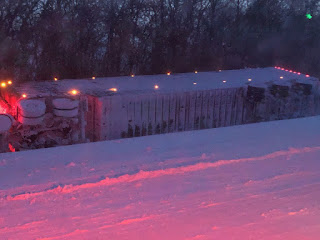A little over a week and a half ago, a serious blizzard hit the entirety of the state of Minnesota as temperatures plummeted to feel as cold as -40 degrees Fahrenheit. Many residents of Minnesota claim that they are "used" to the freezing temperatures and dangerous driving conditions, and yet every year, like clockwork, the annual large blizzard hits and multiple accidents occur due to reckless driving. In this way, approximately 400 deaths result annually in the United States as a result of whiteout conditions and extreme cold during blizzard events.
 |
| A visual from the National Weather Services on February 12 |
This isn't even the most destructive blizzard in Minnesota's history - far from it. In 2007, a blizzard hit the Duluth area and dropped over 20 inches of snow (for comparison, this blizzard ended up dropping at most four inches. The danger came from white-out driving conditions). Similarly destructive blizzards took place in 1991 on Halloween, and 1989 in early January. Additionally, large blizzards like this one tend to set up extreme flooding events once snow-melt occurs, which is what happened in the winter of 96-97, causing the "worst flooding ever" in the area.
 |
| An overturned semi having a really bad night. |
But how do these large blizzards form? Snowstorms result from a mass of cold air near the Earth's surface "combines" with a mass of moist, warm air higher up. The warm air forms precipitation, and the cold air keeps it frozen in the form of snow. But that's just how normal snowstorms form - the kinds of blizzards that rock Minnesota on an annual basis need more dangerous factors - an increase in the severity of the cyclones that funnel the warm moist air into the cold mass below is one such possible factor.
So what can we do to prevent blizzard-related casualties? Listen to your local and state governments - the town police department's social media is a great resource to check on during blizzard events to see if it's safe to drive. The danger from this most recent blizzard wasn't due to quantity of snow like the other aforementioned storm events that rocked Minnesota - it was dangerous due to whiteout driving conditions that drivers either didn't expect or underestimated. Playing it safe during dangerous driving conditions is the best preventative agent to having a really, really bad day. And if you think you're still a perfect driver during these dangerous events, consider this - you don't have to be the one to spin out of control for you to end up in an accident. Nearby drivers are facing the same conditions as you, and they may not handle it as well. Make the right decision, and stay home during snowfall!
“Famous Winter Storms.” Minnesota Department of Natural Resources, www.dnr.state.mn.us/climate/summaries_and_publications/winter_storms.html.
Kocin, P. J. (1992). Snowstorms and blizzards. Natural and Technological Disasters: Causes, Effects, and Preventive Measures, 16, 208.
Nelson, Joe. “Dangerous Winter Weather as Arctic Front Arrives in MN.” Bring Me The News, 12 Feb. 2020, bringmethenews.com/minnesota-weather/dangerous-winter-weather-as-arctic-front-delivers-blizzard-plummeting-temps-to-minnesota.


Comments
Post a Comment